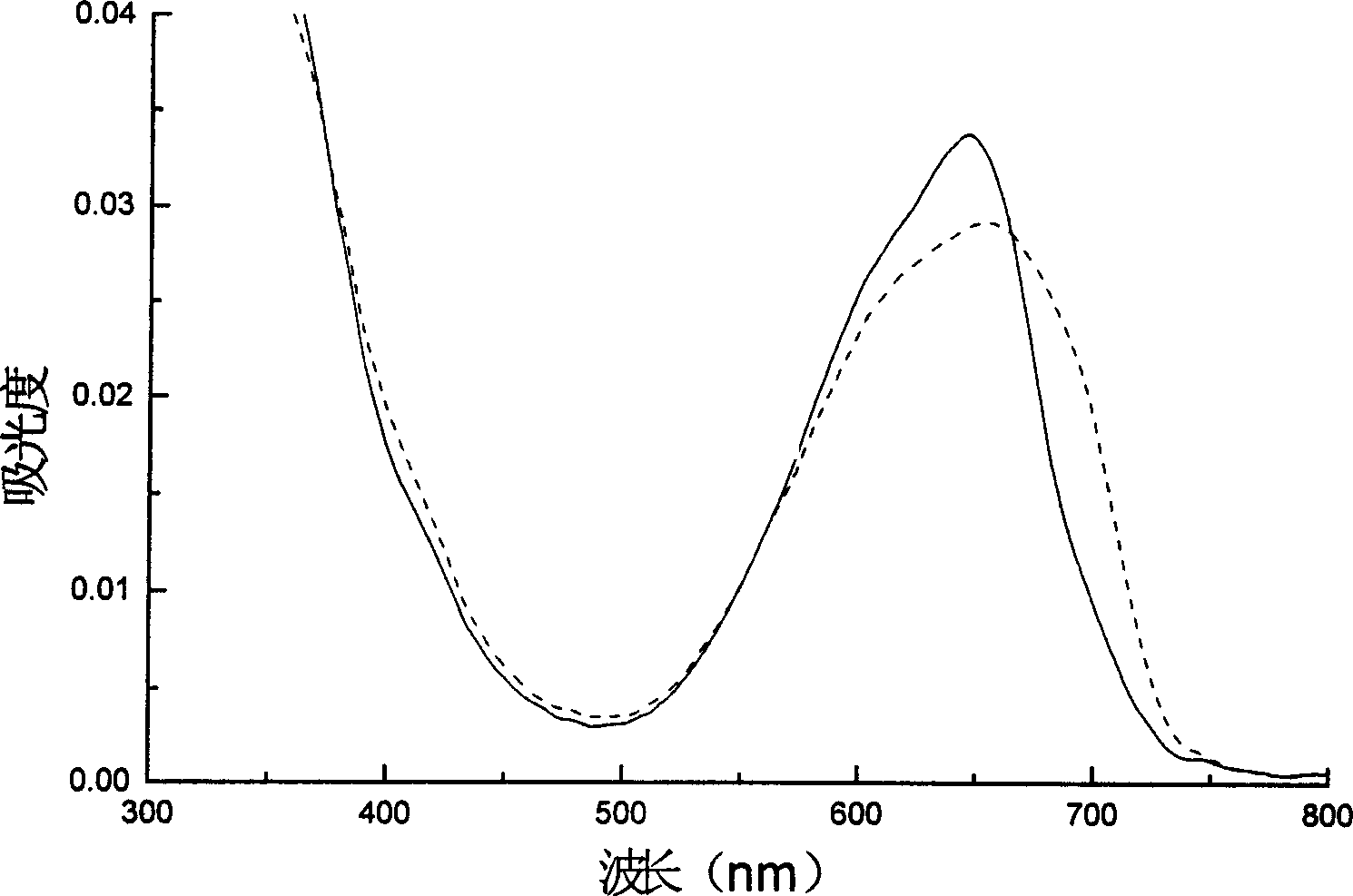Preparation method of reversible photochromic biliprotein
A technology of bilirubin and photochromism, which is applied in the field of pigment protein materials in biotechnology, and can solve problems such as application limitations
- Summary
- Abstract
- Description
- Claims
- Application Information
AI Technical Summary
Problems solved by technology
Method used
Image
Examples
Embodiment 1
[0017] (1) The aphA numbered AB028873 in GenBank was cloned into the expression vector pET30 of Novagen Company, and the recombinant expression vector was transformed into Escherichia coli to obtain the corresponding engineering bacteria of Escherichia coli, which was used to produce AphA. The AphA produced in this way has an affinity tag composed of 6 histidines. Therefore, a metal ion chelating affinity chromatography column matching the affinity tag can be used to separate and purify AphA.
[0018] (2) Mix the apoprotein AphA obtained in step (1) with PC, and react according to the following reaction conditions: reaction temperature 37°C, pH value 7.5; cofactors required for the reaction: ①5mmol / L magnesium ion, ②5mmol / L L of mercaptoethanol.
[0019] The reaction results in the phytochrome reversible photochromic bilirin protein AphA.
Embodiment 2
[0021] (1) The aphA numbered AB028873 in GenBank was cloned into the expression vector pGEMEX of Novagen Company, and the recombinant expression vector was transformed into Escherichia coli to obtain the corresponding E. coli engineering bacteria, which was used to produce AphA.
[0022] (2) Mix the apoprotein AphA obtained in step (1) with PC, and react according to the following reaction conditions: reaction temperature 37°C, pH value 7.5; cofactors required for the reaction: ①5mmol / L magnesium ion, ②5mmol / L L of mercaptoethanol.
[0023] The reaction results in the phytochrome reversible photochromic bilirin protein AphA.
Embodiment 3
[0025] (1) The cphl numbered D64001 in GenBank was cloned into the expression vector pET30 of Novagen Company, and the recombinant expression vector was transformed into Escherichia coli to obtain the corresponding E. coli engineering bacteria, which was used to produce Cphl. The Cphl produced in this way has an affinity tag composed of 6 histidines, therefore, a metal ion chelating affinity chromatography column matching the affinity tag can be used to separate and purify Cphl.
[0026] (2) Mix the apoprotein Cphl obtained in step (1) with PC, and react according to the following reaction conditions: reaction temperature 37°C, pH value 7.5; cofactors required for the reaction: ① 5mmol / L magnesium ion, ② 5mmol / L L of mercaptoethanol.
[0027] The reaction results in the phytochrome reversible photochromic bilirin protein Cphl.
PUM
 Login to View More
Login to View More Abstract
Description
Claims
Application Information
 Login to View More
Login to View More - R&D
- Intellectual Property
- Life Sciences
- Materials
- Tech Scout
- Unparalleled Data Quality
- Higher Quality Content
- 60% Fewer Hallucinations
Browse by: Latest US Patents, China's latest patents, Technical Efficacy Thesaurus, Application Domain, Technology Topic, Popular Technical Reports.
© 2025 PatSnap. All rights reserved.Legal|Privacy policy|Modern Slavery Act Transparency Statement|Sitemap|About US| Contact US: help@patsnap.com

